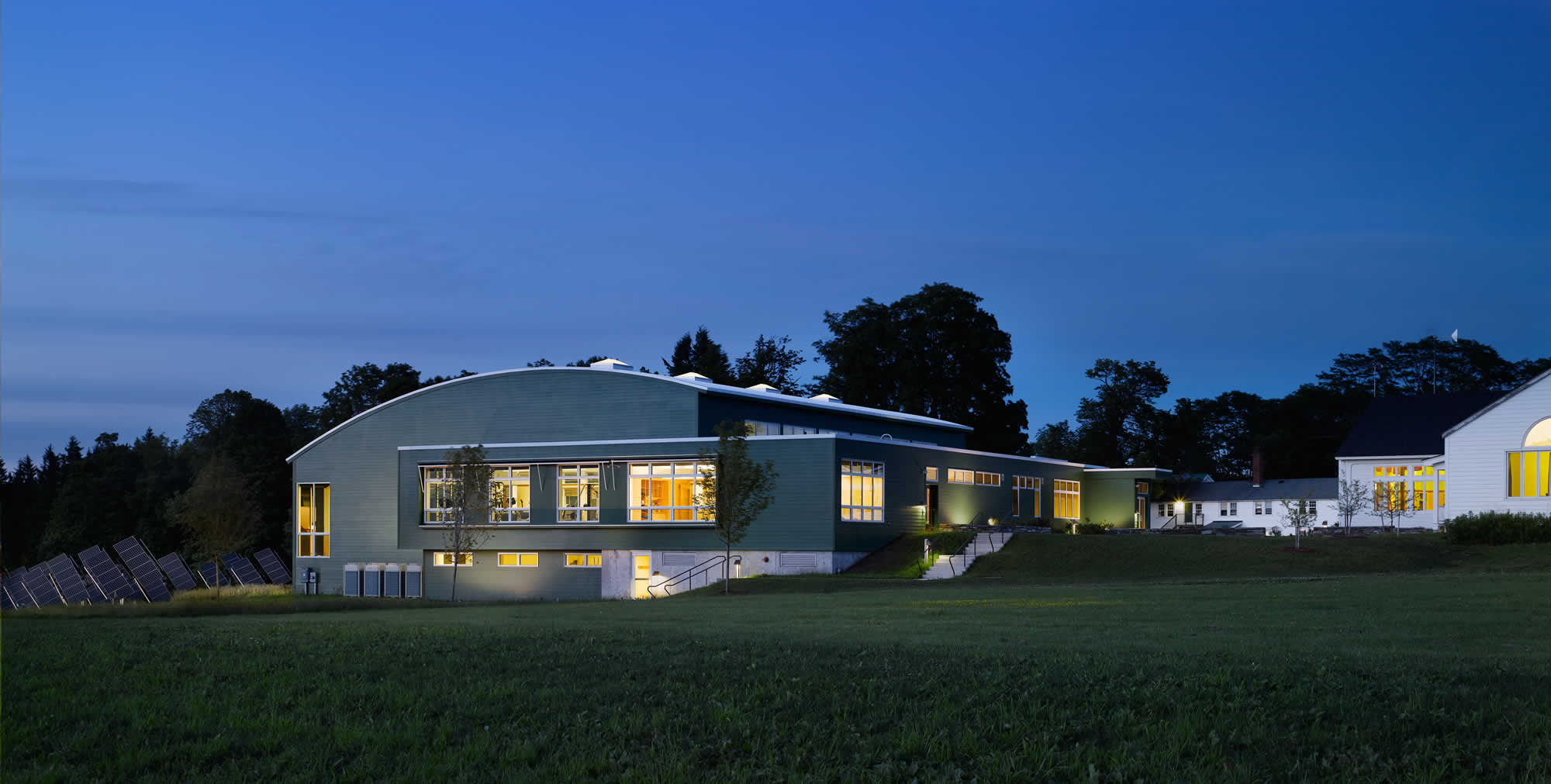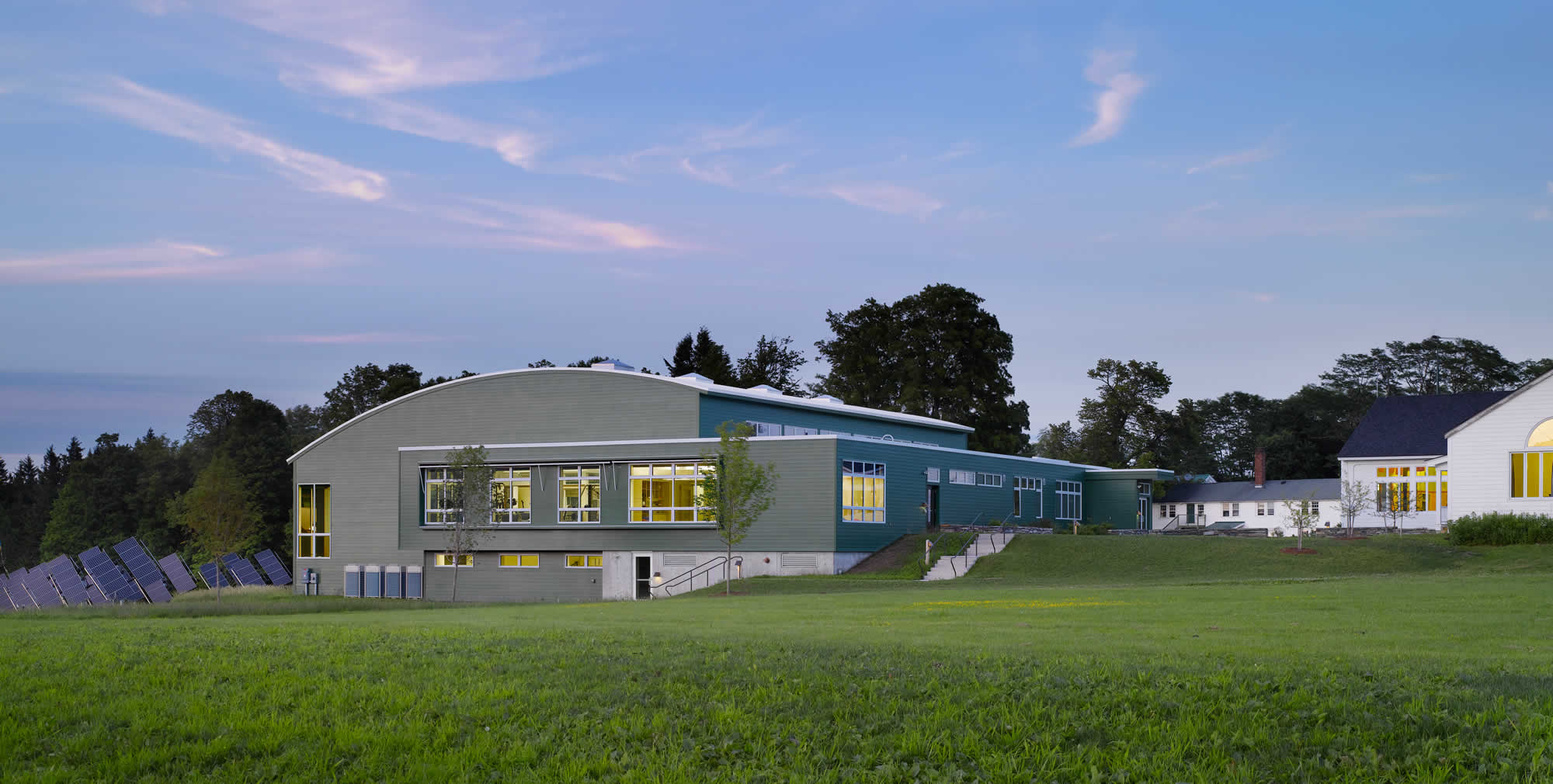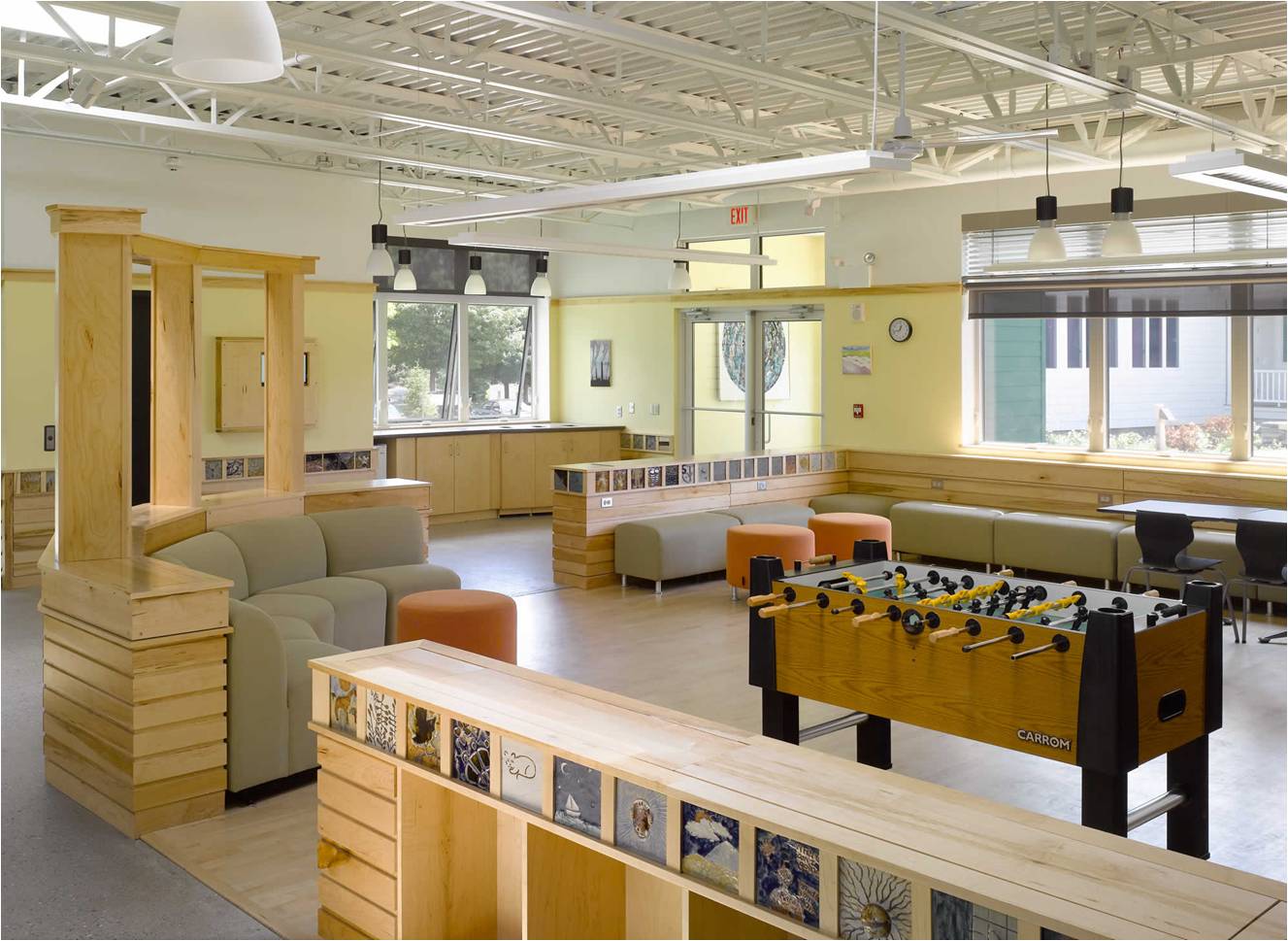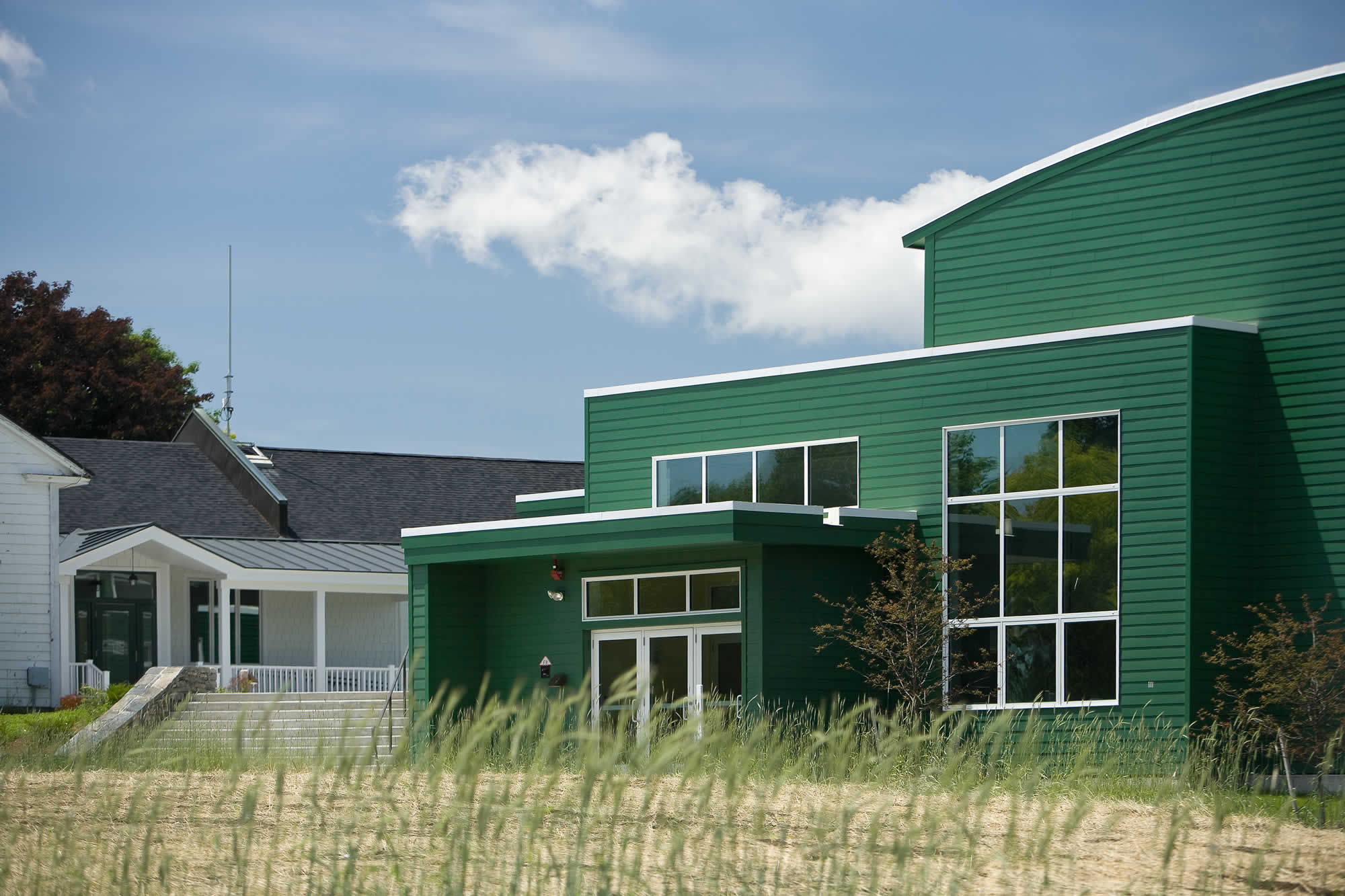Project Subtitle:
Project Description:
“This is not just a gym…We want this to be a place where our students can learn about being environmentally responsible, so that later in life, when they are making choices, they can say, ‘It’s possible. Our gym at school did it this way’.” – Randy Smith, Putney School
The design process for the Putney School Field House started from the client’s request, to design the highest quality environmental building within their budget. The team modeled and evaluated a range of energy and environmental building alternatives, comparing construction costs, 30-year operating costs and CO2 emission.
Some options were removed from consideration almost immediately because they did not go far enough in reaching the School’s sustainability goals. The net-zero option gained final approval from the school. From the School’s perspective it seemed much easier to raise the extra money needed for the construction of a model building than for an endowment for ongoing operating costs for a less-efficient building. The School also decided to seek platinum LEED certification for the project to confirm their efforts with third-party verification.
Throughout the design process, Maclay Architects, working with the design team, conducted multiple day-long work sessions with students, faculty and staff, focusing on key design points. While these sessions added time, voices and viewpoints to the design process, they allowed for a building that speaks of and to the school community. Upon completion, educational signage was placed throughout the building to explain the unique building features and enhance the experience of visitors through learning.
Super-insulation and extensive air sealing were integral to reducing the energy consumption of the facility. To reduce heating energy use by 77% compared to the ASHRAE Standard 90.1-2007 baseline building (Appendix G), the following high insulative levels were used: R-60 roof, R-45 walls above grade, R-20 slabs, R-20 foundation walls below grade and R-5 windows. Through careful design and execution the building achieved a tested air leakage rate of 0.065 cfm/sq ft. of above ground building shell at 50 pascals test pressure or 1,625cfm-50 total air leakage rate.
Consideration of mechanical systems included both ground-source and air-source heat pumps. Though the air-source system was less efficient than the ground-source system, the solar panels required to cover this inefficiency required less investment than the difference of cost the systems. Based on the cost and the simplicity of the system, the school chose to install the air-source system. To achieve the zero energy goal an investment in renewable on site renewable energy systems included 36.8 kW of solar tracking collectors installed to the north of the Field House.
Construction on the Putney School Field House began in 2007 and was completed in October 2009. The 16,800 square foot Field House is New England’s first net-zero athletic building and received LEED Platinum certification from the U.S. Green Building Council.
Building Type Summary:
Address:
Elevation:
Lat. / Long.:
Köppen Climate Type:
Climate Region:
Solar Insolation:
Occupancy Type and Details:
The Putney School Field House is utilized as a training and workout gym by all students and faculty. The school hosts indoor sporting events such as basketball games in the Field House, and it functions as an informal gathering space for students and a more formal gathering space for campus events.
Most students, faculty and staff live at the school and when school is not in session many other groups and individuals utilize the campus space, the Field House is utilized 365 days a year. Though, there are only three offices providing space for full-time occupants, when you factor in the larger groups that utilize this space for shorter periods of time, the Field House averages 78 people per day, resulting in 28,470 person days of occupancy.
Conditioned Floor Area:
Multiple buildings?:
Historic?:
Electric Utility Company:
Electricity amount (imported from grid):
Subslab assembly:
4” EPS under whole slab
Slab edge assembly:
3” EPS at slab joint
Foundation wall assembly:
2” EPS panel to 48” depth
Above grade wall assembly:
gym wall: 17” of cellulose insulation, all other spaces: 8” of cellulose and 2” of Poly-isocyanurate
Flat attic assembly:
9” continuous Poly-isocyanurate
Space heating - Manufacturer & Model:
Space cooling - Manufacturer & Model:
Domestic hot water - Manufacturer & Model:
Total Cost of Project:
Energy Use and Production Documentation:
Subslab R-value:
Slab edge R-value:
Foundation wall R-value:
Above grade wall R-value:
Flat attic R-value:
Average window U-factor:
Solar Heat Gain Coefficient:
Visible Light Transmittance:
Cost per square foot of Conditioned Space:
Project Photos:





Window Description:
a. Triple-glazed, low-e, argon filled: U-value – 0.15, SHGC – 0.28, VT – 0.49
b. Skylights in wellness spaces and offices (Velux), double-glazed, low-e, argon filled: U-value – 0.4, SHGC – 0.34, VT – 0.54
c. Skylights in gymnasium (Sun Optics), triple-glazed, prismatic acrylic: U-value – 0.35, SHGC – 0.74, VT – 0.66
